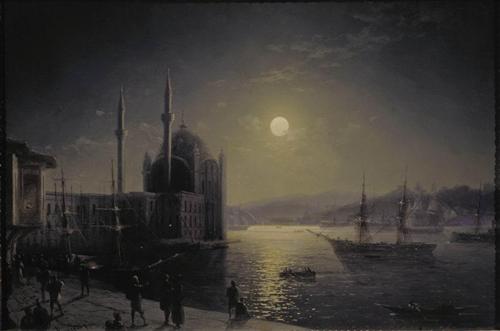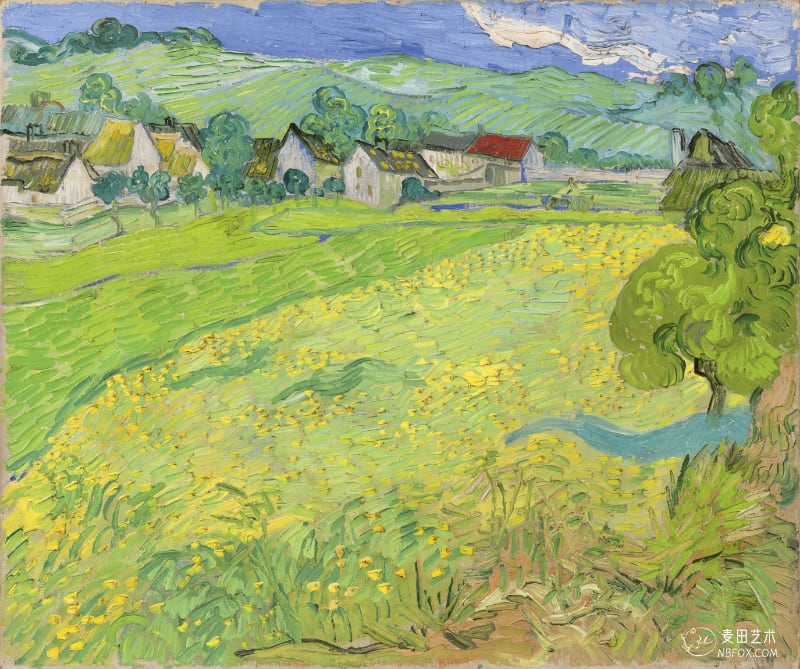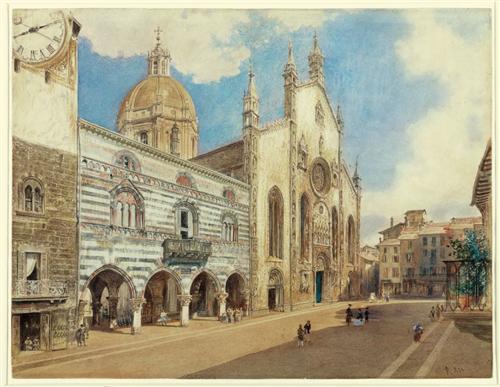图片尺寸:2750 × 2294px
作品名称:The Stevedores in Arles
中文名称:阿尔勒的装卸工人
创作者:文森特·梵高 Vincent van Gogh
创作年代:1888
风格:后印象派
体裁:城市风光
材质:布面油画
现位于:Thyssen-Bornemisza Museum, Madrid, Spain
实际尺寸:64 x 53.5 cm
版权信息: Public Domain(公有领域)
无水印高清图下载
图片尺寸:2750 × 2294 像素
图片大小:2.7 MB
图片格式:JPG
下载方式:百度网盘
下载地址:

作品介绍
机器翻译:
当文森特-凡高于1888年2月来到阿尔,寻求法国中部地区的明亮气氛时,他放弃了点彩画和印象派的方法,而选择了更加合成的形式和更加响亮的色彩。《阿尔勒的装卸工人》清楚地证明了这一风格上的变化,画中的笔触厚实、拉长,色彩对比明显。这幅画展示了罗纳河的景色和炽热的夕阳,其中的构图主题--明显受到日本艺术的影响--在光线下显得格外突出。1888年8月初,文森特在阿尔给他的兄弟提奥的信中说:"今天晚上我看到了一种宏伟而奇特的效果"。"罗纳河上一艘满载煤炭的大船,停泊在码头上。从上面看,一切都闪闪发光,而且被阵雨打湿了;水是黄白色的,蒙上了珍珠灰;天空是淡紫色的,西边有一道橙色的条纹;城市是紫色的。在船上,一些穿着肮脏的蓝色和白色衣服的可怜的工人来来往往,把货物搬到岸上。这就是纯粹的北斋"。
这一景象给艺术家留下的印象促使他不久后在三幅画中描绘了它。其中的第一幅《运沙船》从一个非常倾斜的高视角来观察两艘停泊的船,就像从一个非常高的码头上拍摄的一样,一些人在日光下从码头上卸下沙子而不是煤炭。后来,也许是在8月底,他又画了两幅类似的画,这次是表现夕阳。煤炭驳船和阿尔勒的蒂森-博内米萨博物馆装卸工。第一幅画的高视角被更贴近地面的构图所取代,其被迫的视角被更多的正面视角所取代。这种新的焦点使他能够描绘出一种宽广的、带有橙色的氛围,在这种氛围中,黑暗的前景船只和河对岸的建筑在光线下显得格外突出。将夜晚的黑暗比作从船上卸下的煤炭的黑色并不是巧合。梵高并没有仅仅满足于表象,而是努力寻求意义,用色彩来表达某种感情。
罗纳德-皮克万斯在对蒂森-博内米萨收藏的这幅画和属于私人收藏的这幅画的比较研究中指出,尽管这两幅画都是他在拉马丁地方的工作室里凭记忆画的,使用的是同样快速、自信的笔触,但不仅在尺寸上有很大差别,在构图的处理上也是如此。此外,就像在阿尔勒画的其他作品一样,蒂森-博内米萨博物馆的作品显示了由于画布被卷起以便在某些时候被移动的方式而造成的纵向痕迹。
1905年夏天,《装卸工人》以Zonsondergang为题在阿姆斯特丹Stedelijk博物馆的梵高回顾展上展出,在这次回顾展上,他的嫂子Johanna van Gogh-Bonger将这位艺术家的大部分遗产展示了出来。后来,从1910年开始,它被纳入保罗-卡西尔在德国组织的几个展览中。
帕洛玛-阿拉尔科
原文:
When Vincent van Gogh arrived in Arles in February 1888 seeking the luminous atmosphere of the French Midi, he eschewed pointillist and Impressionist methods in favour of more synthetic forms and louder colours. The Stevedores in Arles, which clearly evidences this stylistic change, is painted with thick, elongated brushstrokes and marked colour contrasts. It shows a view of the Rhone with a blazing sunset in which the motifs of the composition— clearly influenced by Japanese art — stand out against the light. “I saw a magnificent and strange effect this evening, ” wrote Vincent to his brother Theo from Arles at the beginning of August 1888. “A very big boat loaded with coal on the Rhône, moored to the quay. Seen from above it was all shining and wet with a shower; the water was yellowish-white and clouded pearl gray; the sky, lilac, with an orange streak in the west; the town, violet. On the boat some poor workmen in dirty blue and white came and went carrying the cargo on shore. It was pure Hokusai.”
The impression this sight made on the artist spurred him to depict it shortly afterwards in three paintings. The first of them, Boats with Sand, features two moored boats viewed from a very oblique, high perspective, as if captured from a very tall quay from which some men unload sand, not coal, in full daylight. Later, perhaps at the end of August, he painted two similar pictures, this time showing the sunset: Coal Barges and the Museo Thyssen-Bornemisza Stevedores in Arles. The high viewpoint of the first painting is replaced by a composition closer to the ground and its forced perspective by a more frontal view. This new focus enables him to depict a broad, orange-tinged atmosphere in which the dark foreground boats and buildings on the other side of the river stand out against the light. The likening of the darkness of night to the blackness of the coal unloaded from the vessels was no coincidence. Van Gogh did not settle merely for appearances but strove to seek meanings and used colour to express certain feelings.
In his comparative study of the painting in the Thyssen-Bornemisza collection and that belonging to the private collection, Ronald Pickvance states that although both were painted from memory in his studio in the place Lamartine using the same rapid, confident brushstrokes, there are substantial differences not only in their size but also in the handling of the composition. Furthermore, as in other works painted in Arles, the work in the Museo Thyssen-Bornemisza displays the lengthwise marks caused by the manner in which the canvas was rolled up to be moved at some point.
The Stevedores was exhibited in summer 1905 with the title Zonsondergang in the Van Gogh retrospective at the Stedelijk Museum in Amsterdam, in which his sister-in-law Johanna van Gogh-Bonger brought to light most of the artist’s Estate. Later, from 1910 onwards, it was included in several exhibitions organised by Paul Cassirer in Germany.
Paloma Alarcó





